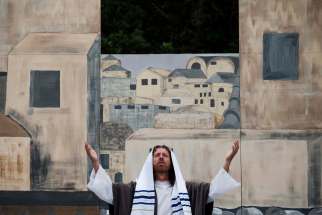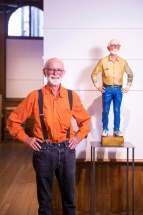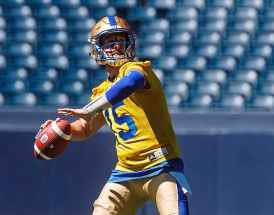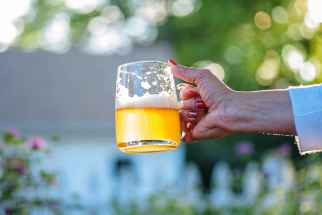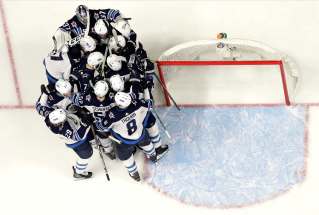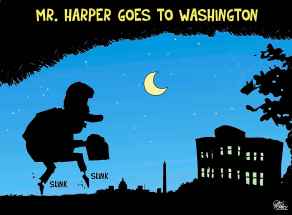Appreciation from an apostle Renowned Prairie sculptor Joe Fafard pays tribute to revered Dutch master in new Winnipeg exhibition
Read this article for free:
or
Already have an account? Log in here »
To continue reading, please subscribe:
Monthly Digital Subscription
$0 for the first 4 weeks*
- Enjoy unlimited reading on winnipegfreepress.com
- Read the E-Edition, our digital replica newspaper
- Access News Break, our award-winning app
- Play interactive puzzles
*No charge for 4 weeks then price increases to the regular rate of $19.00 plus GST every four weeks. Offer available to new and qualified returning subscribers only. Cancel any time.
Monthly Digital Subscription
$4.75/week*
- Enjoy unlimited reading on winnipegfreepress.com
- Read the E-Edition, our digital replica newspaper
- Access News Break, our award-winning app
- Play interactive puzzles
*Billed as $19 plus GST every four weeks. Cancel any time.
To continue reading, please subscribe:
Add Free Press access to your Brandon Sun subscription for only an additional
$1 for the first 4 weeks*
*Your next subscription payment will increase by $1.00 and you will be charged $16.99 plus GST for four weeks. After four weeks, your payment will increase to $23.99 plus GST every four weeks.
Read unlimited articles for free today:
or
Already have an account? Log in here »
Hey there, time traveller!
This article was published 06/07/2018 (2718 days ago), so information in it may no longer be current.
Vincent van Gogh has been inspiring artists for close to 150 years. For sculptor Joe Fafard, the Dutch master’s life and art have been objects of fascination for many of his 75 years.
So much so that Fafard’s latest Winnipeg exhibition, The Essential Joe Fafard — Van Gogh and Other Inspirations, which opened Friday at Mayberry Fine Art, includes several sculptures of van Gogh, who began painting in 1881 but lived a short, turbulent life, fraught with mental illness, before committing suicide in 1890 at the age of 37.

“Starting about 1983, I started doing portraits of van Gogh,” Fafard says in a phone conversation from his home near Regina.
“Essentially, people used his life, his career and his anguish as sort of a stereotype of an artist’s blueprint for artistic endeavour. I became quite fascinated to see that he was the Christ and other artists were the apostles.”
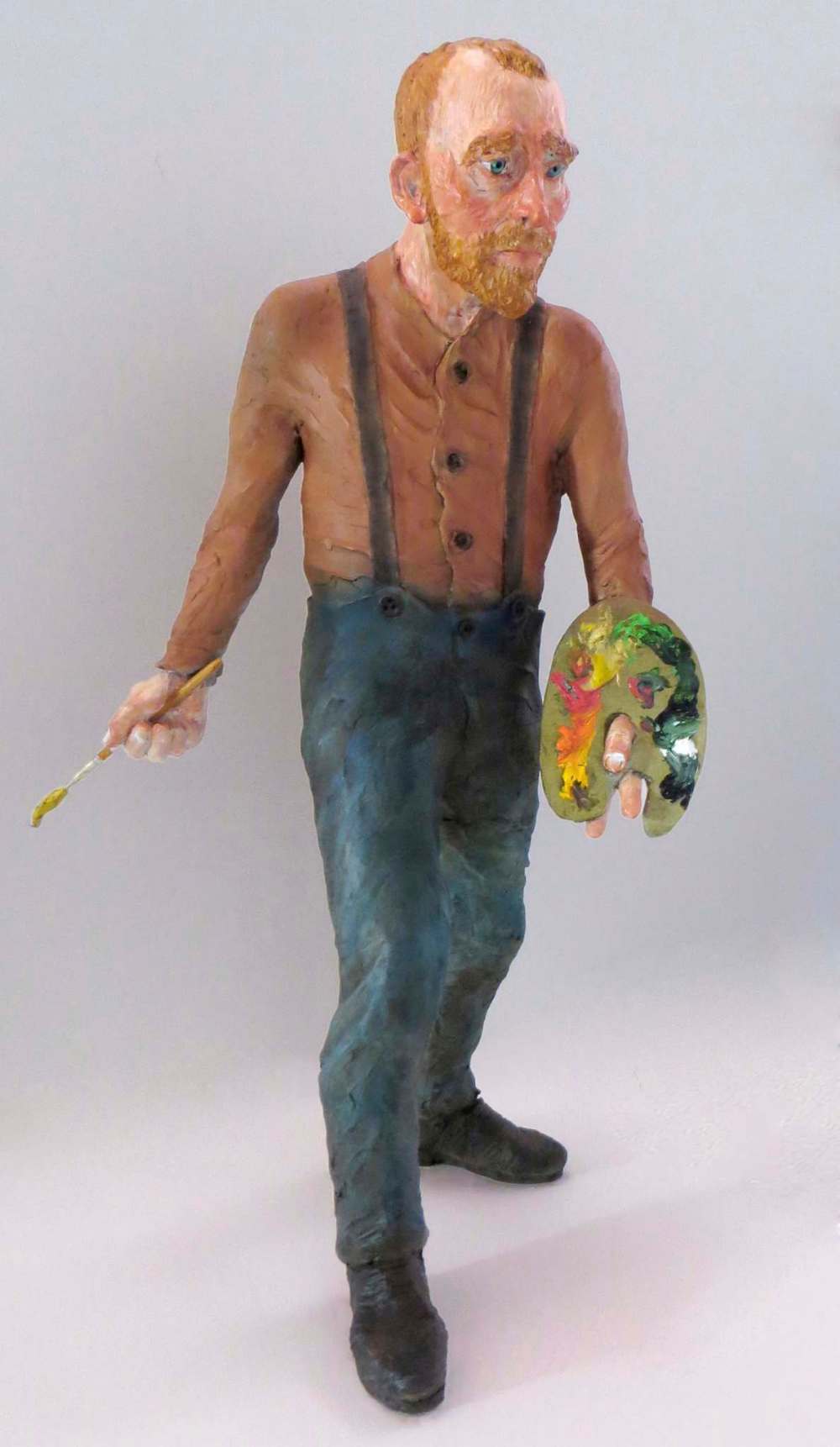
One of the works in the exhibition, a 70-centimetre-tall bronze likeness of van Gogh titled The Sower, focuses on the influence the Dutch painter has had on other artists. Fafard’s description of it makes van Gogh sound like a Johnny Appleseed of the artistic world.
“That was an image he repeatedly came back to and painted and drew,” Fafard says of a man in a field spreading seeds from his hand.
“Since Vincent was so interested in the idea, it should be a good idea to do a portrait of him as such because in a way he was a sower of ideas and many artists have used his ideas and influence to enrich their own art. Pablo Picasso said he was the originator of so many things, and I think that is true.”
Not only did Fafard explore the self-portraits van Gogh made during his lifetime, he also took an interest in the many letters van Gogh sent to his brother Theo.
“I thought it would be interesting to explore his letters,” Fafard says. “So much of the information we have about him comes from his own hand, which is an unusual thing to see among artists. Van Gogh was the pattern to study when thinking about life and dedication to an artistic practice.”
Event preview
The Essential Joe Fafard Van Gogh and Other Inspirations
● Mayberry Fine Art, 212 McDermot Ave.
● To Aug. 28
The same could be said about Fafard, who began drawing and painting as a youngster, whiling away many a cold winter growing up on a Saskatchewan farm, learning the basics.
He moved to Winnipeg in the 1960s to attend the University of Manitoba, where he graduated from its fine arts program in 1966 (an honorary doctorate followed in 2007).
Since then his works have been exhibited across the country and around the world, and many of his bronze sculptures of farmyard animals have become public art pieces in cities such as Toronto, Edmonton and Montreal.
He was named to the Order of Canada in 1981 and in 2012 Canada Post transformed photographs of his sculptures into a series of postage stamps.
Earlier this year, the National Gallery of Canada in Ottawa decided to permanently display one of Fafard’s most famous works, Running Horses, outside near the entrance to the gallery. The 11-piece work that he made in 2007 depicting horses galloping across the prairie was originally made of laser-cut steel and was meant for indoor exhibitions — including one held in 2008 at the Winnipeg Art Gallery.
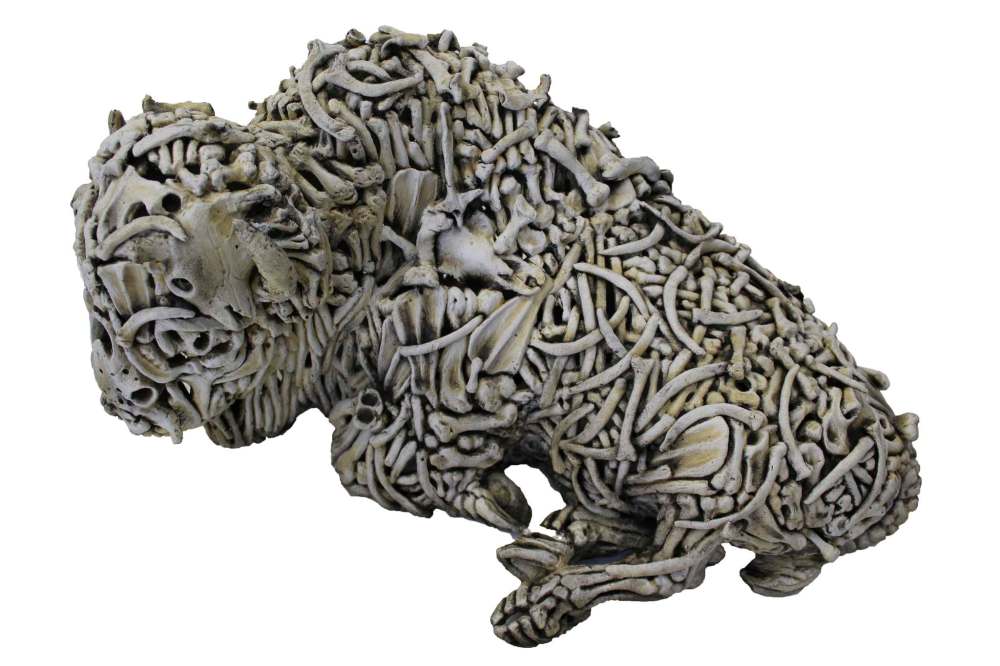
But the steel would rust and deteriorate if left outside, so Fafard created a new version of Running Horses out of aluminum that was poured into the original moulds, and then powder-coated so the work could withstand Ottawa’s weather.
“It’s a great privilege actually, and honour, to be able to show one’s work to all the visitors to our national capital,” Fafard says. “You always hope for that, but that’s not what you work for. You work for the pleasure and interest in working and hope for the best.”
The Mayberry exhibition focuses mostly on portraiture — Fafard also created likenesses of French artist Paul Gauguin and Austrian Expressionist painter Egon Schiele for the show. He says there’s far more to creating a portrait than just replicating a photograph or gazing at a person while they are posing.
“It’s always interesting to do portraits of people; they’re much more complicated than the domesticated animals that I also portray. When they succeed, they’re that much stronger, but you also have a much greater chance of failure because it’s a much more complex individual one is trying to reduce to a lump of bronze.”
“Doing a portrait is not just doing a study of a shape of a nose, it’s actually considering the life and times of that person. It’s kind of like almost an academic study of that person’s life and career and their contribution,” Fafard says.
“It’s always interesting to do portraits of people; they’re much more complicated than the domesticated animals that I also portray. When they succeed, they’re that much stronger, but you also have a much greater chance of failure because it’s a much more complex individual one is trying to reduce to a lump of bronze.”

While Fafard’s works have gone worldwide, he continues to live a rural life on an acreage just north of Regina. He raises chickens, turkeys, geese and ducks, and grows vegetables for markets.
“We’re not classed as a farm yet,” he says.
It’s his way of keeping busy, but to him farming is just as important to his art as it is in putting fresh food on the table.
“I find it stimulating to do that. It’s my tradition. I grew up on a farm and I got my habits as a young kid, of growing food and looking after animals. I would find it kind of sterile if I was just in a studio with non-living things,” he says.
“It always seemed to go together, like the Inuit with carvings of walruses and such were fed by the fact they were also hunters and were out on the land.
“If I were born and raised in the city and lived in a condo I would probably be a different artist and feel differently.”
alan.small@freepress.mb.ca Twitter:@AlanDSmall

Alan Small has been a journalist at the Free Press for more than 22 years in a variety of roles, the latest being a reporter in the Arts and Life section.
Our newsroom depends on a growing audience of readers to power our journalism. If you are not a paid reader, please consider becoming a subscriber.
Our newsroom depends on its audience of readers to power our journalism. Thank you for your support.


